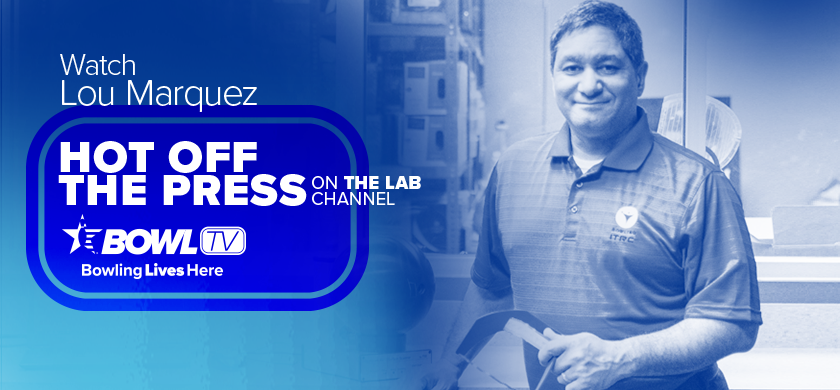By Lou Marquez on Apr 30, 2019 2:20:01 PM
This next topic can be a messy one. Literally. It will require some elbow grease and frequent interaction with your pro-shop professional, who you can think of as your own personal pit crew.
 Now, let's get messy and match the surface of your coverstock to the lane condition.
Now, let's get messy and match the surface of your coverstock to the lane condition.
With the magicians at your favorite bowling-ball plant creating top-secret coverstock formulations and super dynamic RG combination cores to make balls go farther, snap harder and roll faster, they don't really know who is going to purchase the balls. Let that soak in for a minute.
Yes, bowling equipment is designed to do different things to aid and complement our games and the manufacturers try their hardest to make a box finish that will work for the masses, but sometimes that just doesn't work for you. The reality is, the manufacturer doesn't know how you bowl. Your speed, revs, rotation, tilt angle and consistency are unique to you. What about the lane condition you're bowling on? What's the length, volume and level of difficulty of the oil pattern?
OK, I can see the venom spewing from your lips and pins flying my way, so I'll duck and weave for a moment. But as a coach and pro-shop professional, I can safely say your best weapon to make any bowler feel the magic on the lanes is a surface pad. Placing the correct surface to get a ball to slow down in the right part of the lane and then have the revs you imparted match the volume and friction of the lane can make pins do magical things.
The key to finding out how much surface you need requires skill and knowledge gained by experimenting. Go to your local bowling center with a few pads (of varying grits) and throw some shots. This can be a real eye opener.
You'll be able to see how the surface of the ball affects the dynamic motion through the heads, mids and backend. You'll see how a different surface changes the shape of the ball motion and how it forces your feet and target to adjust with the pattern. All these things expand our lane-play knowledge.
My best advice is to take notes on what happens with a given ball when you change the surface. How did the length become affected, what was the motion through the pins, how did the ball exit the pin deck? Also takes notes on the lane conditions so you can apply your knowledge to different pattern styles and lengths.
There's a lot to learn about surface. The best way to do that is through experience. Go experiment and find the best surface match for your game.
Now go make some dust and good luck.
Lou




comments